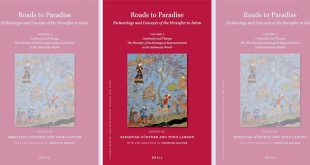This text, prepared and published by Al-Ghadeer Center for Islamic Studies and translated by Hamid S. Atiyyah, reveals the facts about the Wahhabia doctrine and sheds lights on its origins, school of thought, and relation with other sects of Islam.
The Wahhabi sect was founded by Muhammad ibn Abdul Wahhab ibn Suleiman al-Najdi (1111 – 1206 AH.). After obtaining fundamental religious training he developed a special interest in books on false Prophets such as Musailama al-Kathab, Sajah al-Aswad al-An’si and Tulaiha al- Assadi. In the early period of his scholarship his father and tutors became aware of his deviant thinking and this led them to warn people of him by saying: “This man will go astray and will mislead those whom Allah wish to keep distant [from Him] and torment.”
In 1143 AH. Muhammad ibn Abdul Wahhab called upon the people of Najd to follow his new doctrine. However, his father and religious teachers rehmently opposed him and publicly refuted his ideas. Consequently, his mission remained unpopular until his father’s death ten years later. At that time he resumed his preaching and a small group of villagers followed him. Most of the villagers were, however, incensed by this and tried to kill him.
He was thus, forced to flee to another town, Uyayna, where he won the favour of its ruler by marrying his sister. He remained there preaching his new doctrines until the indignant population drove him out. In al-Daria in eastern Najid he finally found permanent refuge.
As a historical footnote it should be remembered that this was the land of the false prophet Musailama and the birthplace of the rada or apostatsy movement after the Prophet’s death. Ibn Abdul Wahhab’s ideas fell on fertile ground in the town of al-Daria and its ruler, Muhammad ibn Saud, and most of its inhabitants converted to the new doctrine.
At that time Ibn Abdul Wahhab behaved as if he had absolute monopoly over ijtihad, i.e. the ability to arrive at logical deductions on religious questions. In reality however, Ibn Abdul Wahab lacked the basic prerequisites that could qualify him to the rank of ijtihad. This was the opinion of his brother; Sulaiman, who knew him closely and authored a book refuting his brother’s invocation and demonstrating its falsehood. His book includes the following passage which concisely sums up the Wahhabia and its founder:
At present people are plagued by someone who claims to follow the Holy Quran and al-Sunna (the Prophet Tradition) and dares to deduce from their teachings paying no heed to any opposition. Because anyone who opposes him [he calls] a heretic although he possesses none of the qualifications of the mujtahedeen – and, I swear by Allah, not even one tenth of one of these qualifications. In spite of this, his teachings have attracted many simpletons. To Allah we belong and shall return.
 Ijtihad Network Being Wise and Faithful Muslim in the Contemporary World
Ijtihad Network Being Wise and Faithful Muslim in the Contemporary World

